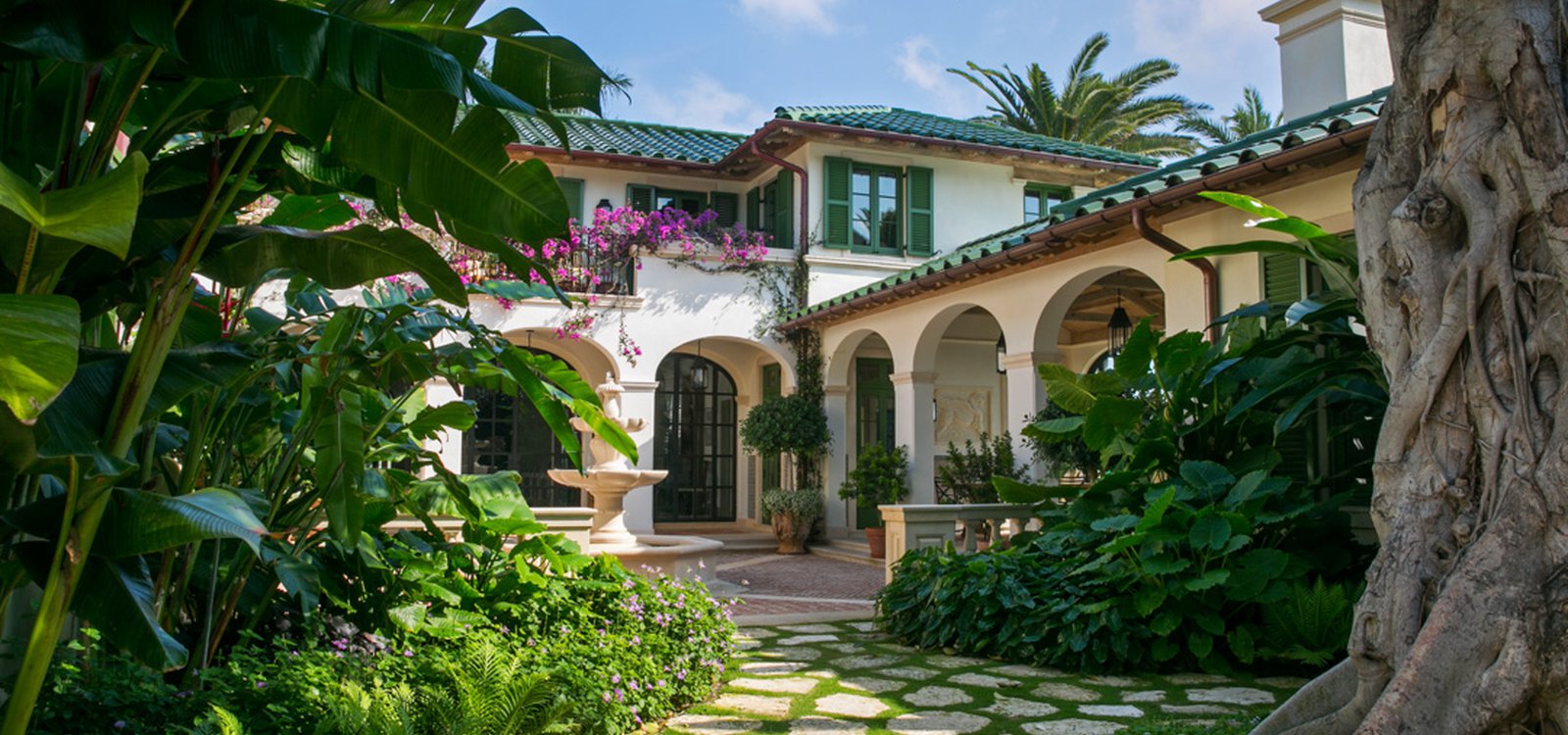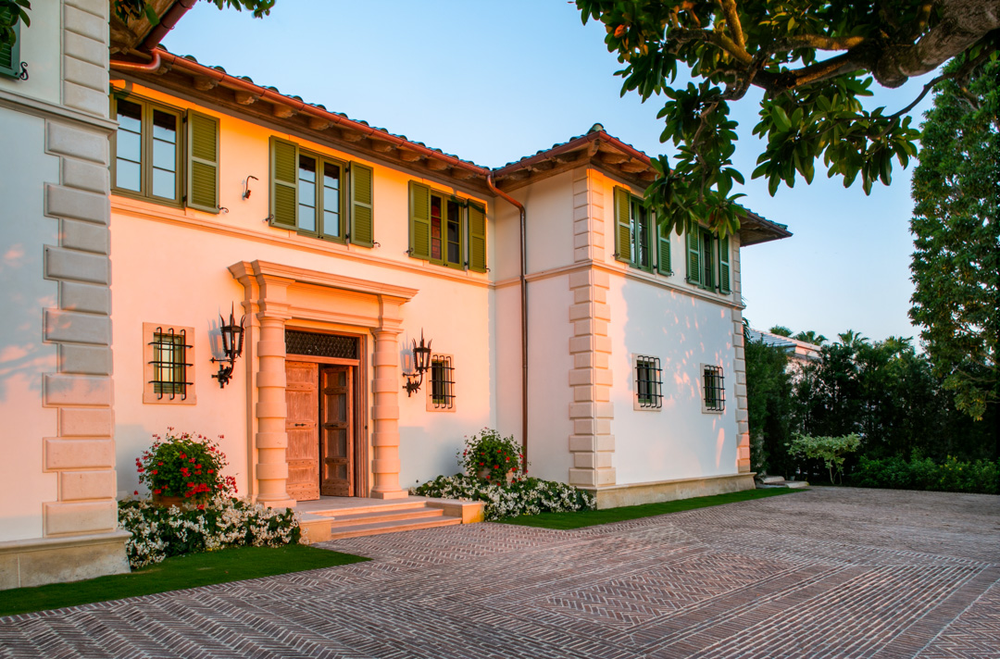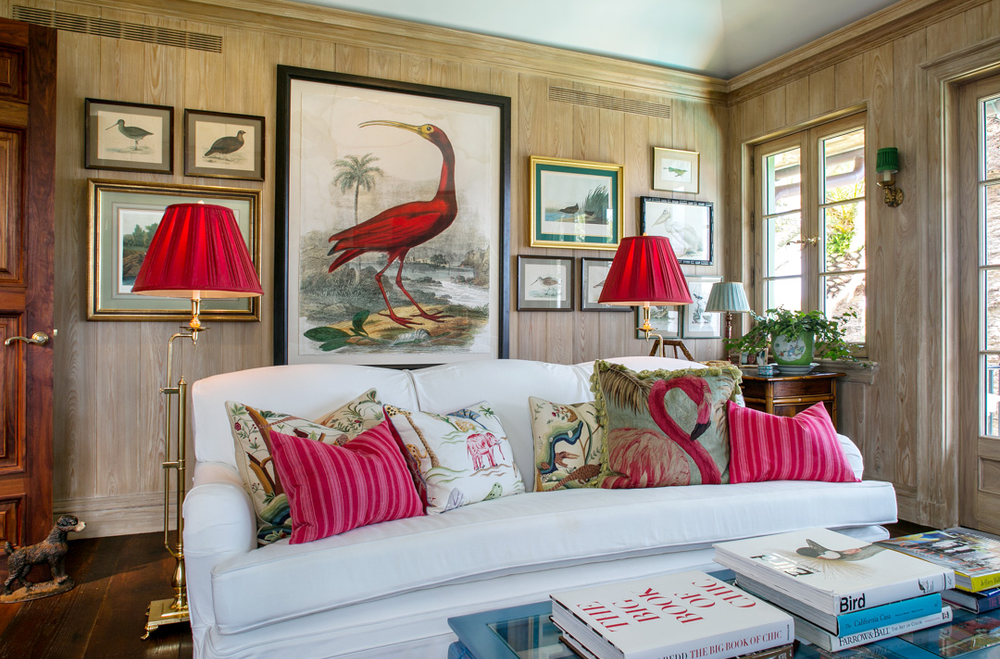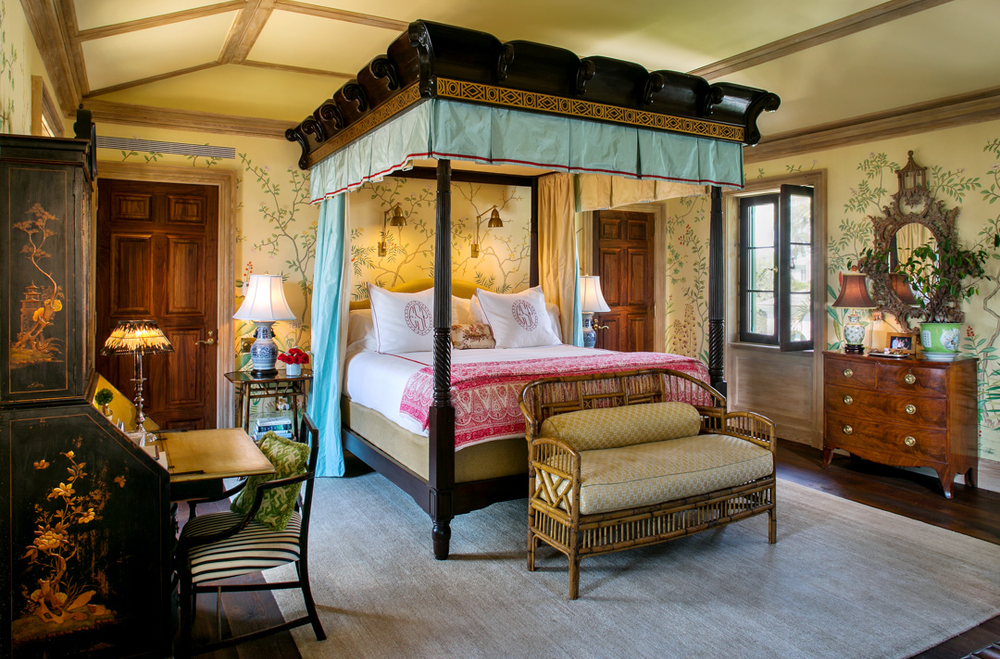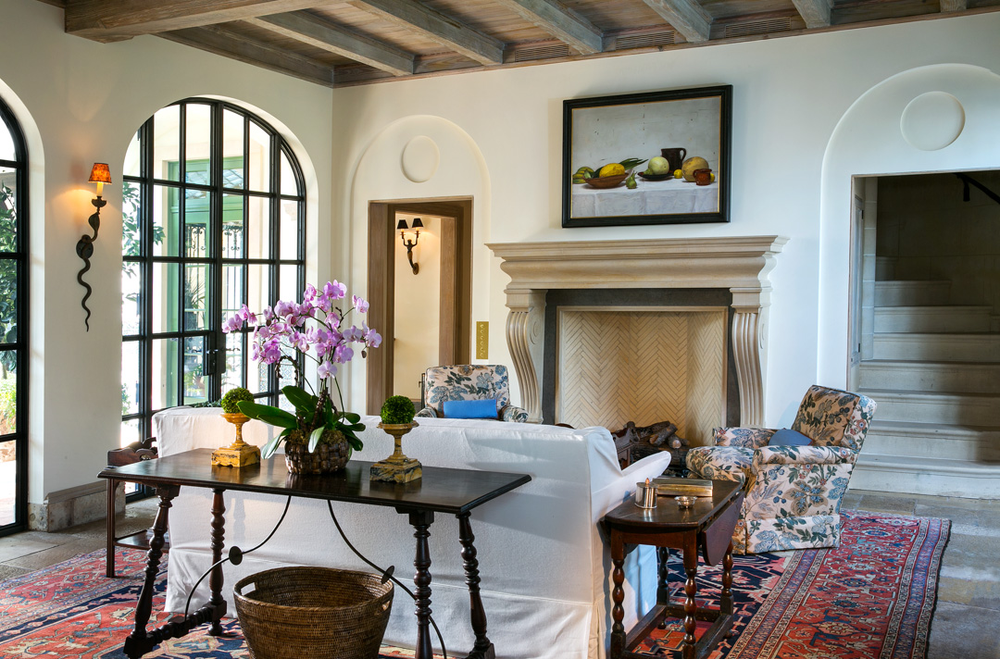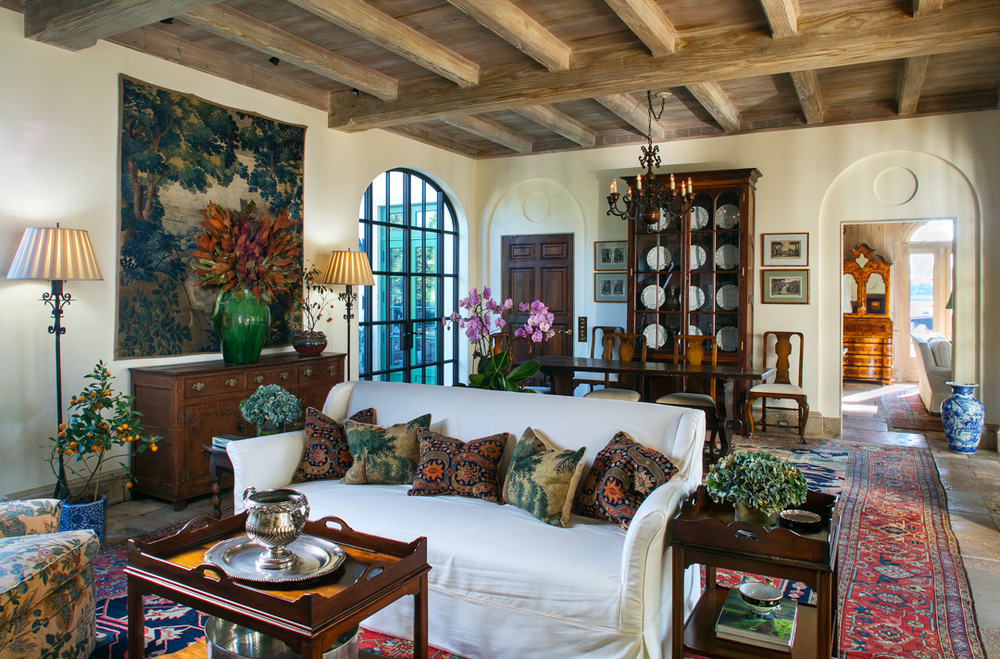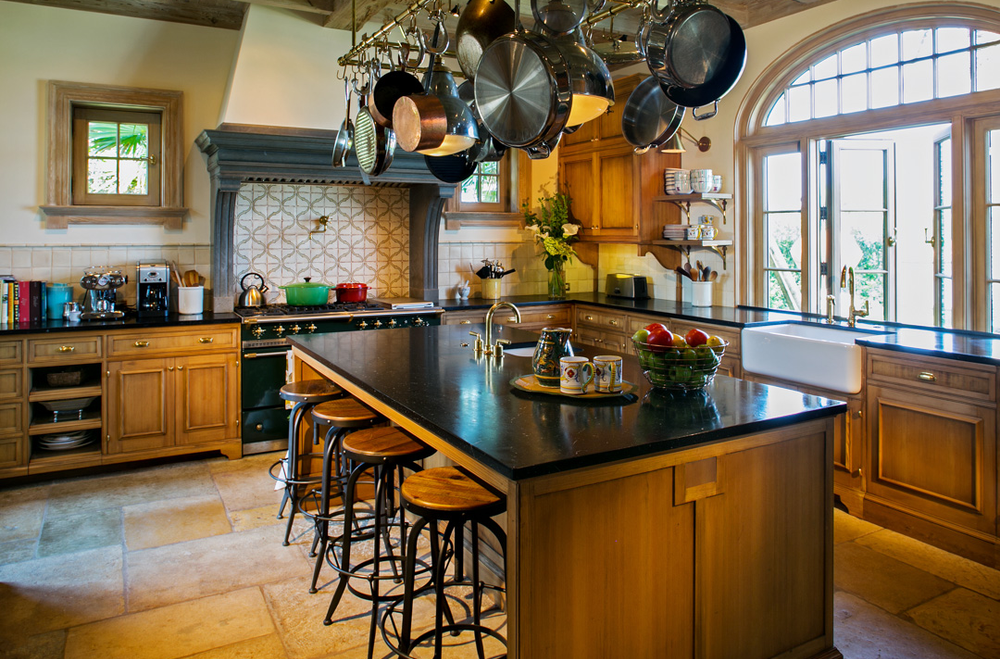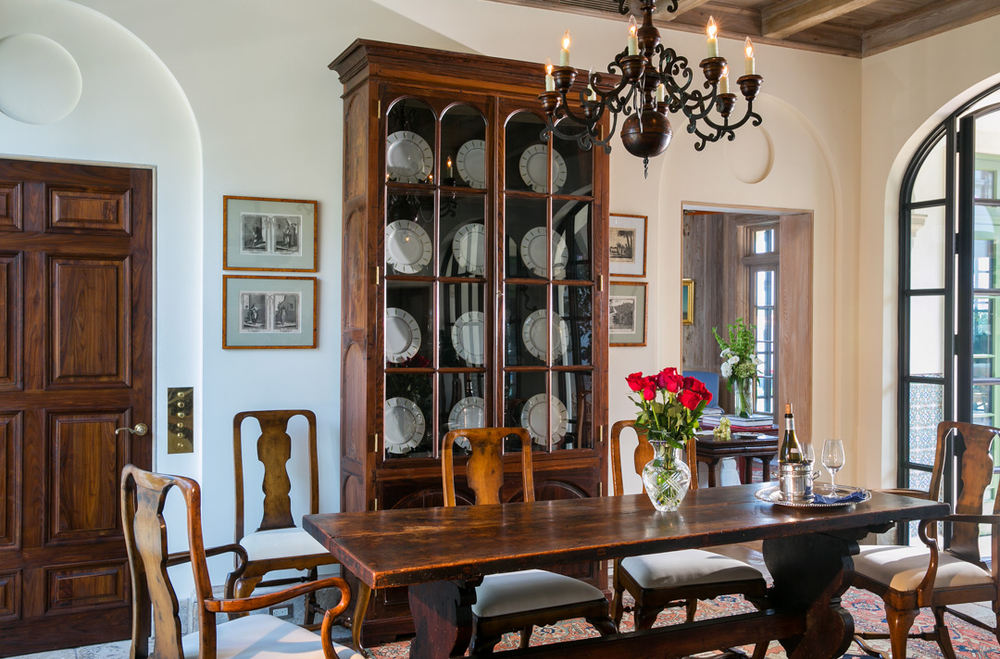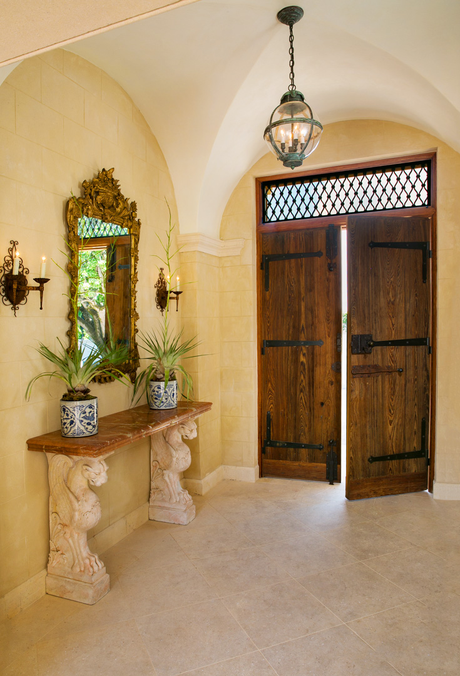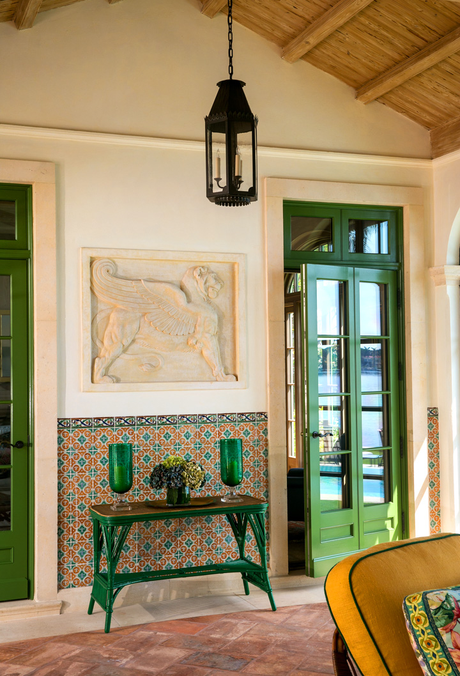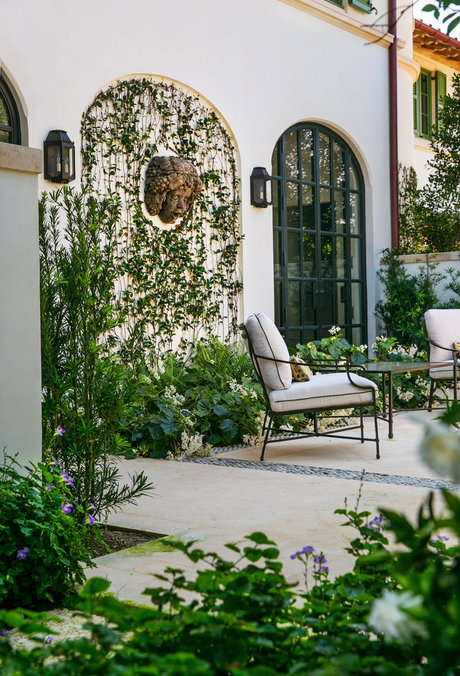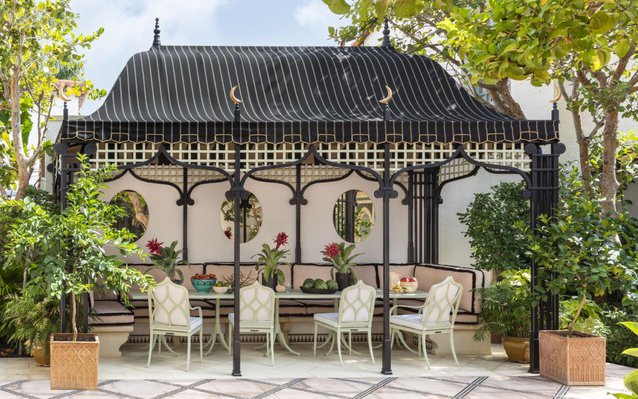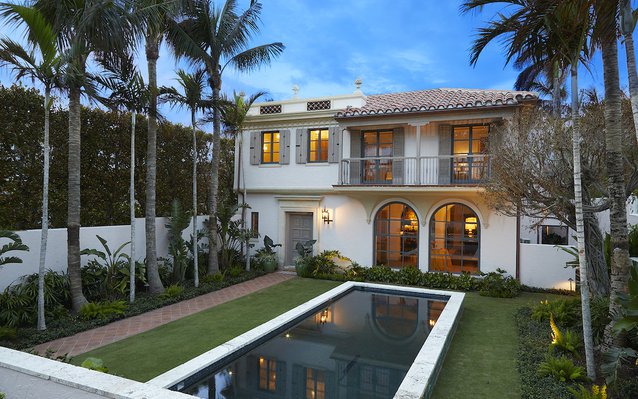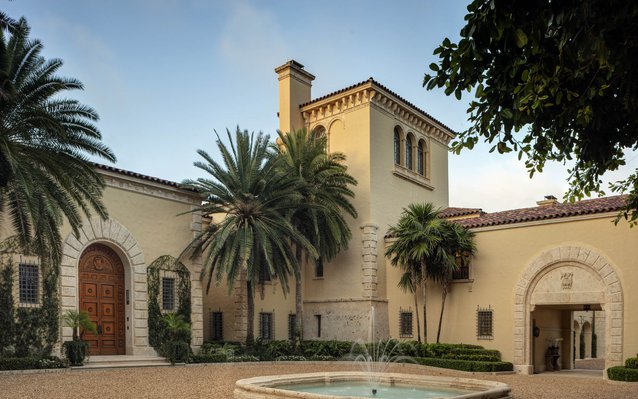Il Cortile
Palm Beach, FL
The intent was to design and construct a house that would be appropriate in scale and character and to ensure that all aspects of the house were authentic.
The house, known as ‘Il Cortile’, has a plan centered on a courtyard and its adjacent outdoor rooms that connect the owners and their guests to interior spaces. Great care was taken both in the selection of well-crafted, robust, and honest materials and in the execution of details so that the home would only grow more beautiful with the passage of time. The exterior of the house is a stucco finish with dimension limestone details that are recessed into the wall structure and set with gravity connections. The street façade, with its battered walls, substantial stone portico and quoins, and wrought iron window grates, presents to the public a solid, almost impervious-looking exterior that hearkens back to the urban façades of Renaissance Italian palazzi. Other exterior features include painted mahogany wood windows, doors and shutters, limed cypress rafter tails, and a roof of green glazed clay tiles with flat pans and barrel caps. The entry sequence of the house begins through the entry piers into a motor court laid with Roman brick pavers in a herringbone pattern. Upon passage through the stone portico and the cypress wood entry doors, one enters a fauces (open-air entry vestibule) with an axial view through the entry loggia, the central courtyard, the pool loggia, the pool deck, and onward towards the Lake Worth Lagoon to the east. The plan of the house centers on the courtyard that is open to the south and framed to the north, east, and west with two loggias and an arcade. The courtyard is shaded by a huge banyan tree to its south and is paved with a combination of stone and Roman brick pavers in a herringbone pattern. A custom-made limestone fountain celebrates the center of the court. The arcade and loggias off the courtyard are treated as outdoor rooms. They have antique terracotta floors with stone borders, colorful Portuguese tile wainscots, and ceilings of either stucco groin vaults or exposed cypress rafters with tongue & groove boards. The family wing to the north of the courtyard contains a large living room, kitchen, and sitting room, as well as the master bedroom suite above, accessible from the living room via an interior stone spiral stair. In order to increase the sense of transparency within this wing, arched bronze doors were used where the living room opens onto the courtyard arcade to the south and an intimate garden court to the north. The ceiling and second-floor structure in the family wing consist of heavy timber beams resting on structural walls and topped by wide-plank wood floors. The living room and loggia fireplace mantels, along with the kitchen hood, are all original designs carved in stone. An outdoor stone stair off of the entry loggia is the primary form of circulation to the second floor, which contains the guest bedroom suites in addition to the master bedroom suite. The owners & their guests have direct access to each one of the five-bedroom suites from open loggias on the first and second floors. The main challenging aspect of the design of Il Cortile was the architects’ desire to use age-old building techniques that are no longer common practice. The fabrication and installation of the stone and metalwork are two examples of where this challenge was encountered. The stone material at Il Cortile is a natural stone rather than cast stone. The stone capitals, string courses, architraves, entablatures, water tables, bases, quoins, etc. are all full-dimension stone set in place with gravity connections rather than held in place as a veneer. The concrete structural walls were recessed during the pouring process to form a shelf in the concrete on which the stone elements could rest. This method of construction, previously in use for many centuries for the longevity it affords, has been nearly forgotten in recent architectural practice. It was a challenging, but very collaborative effort between architect, structural engineer, and contractor to ensure the building shell was constructed properly and the stone was cut correctly. Since this was the first experience the crew had with this type of work, the architect was very involved with the contractor and team on-site to ensure the installation of the stone was executed correctly. The handmade wrought iron metalwork at Il Cortile stands apart by virtue of its quality and craftsmanship. The railings, window grates, and gas entry lanterns were all made by hand, based on the architect’s designs, by a metalworker in North Carolina. This was another very collaborative process to ensure the design of the iron members met the architect’s design requirements. Window grates along the street facade of the house were carefully hand-wrought so that the vertical bars were pierced to allow for the horizontal bars to run through them. This technique is one that blacksmiths had used for centuries but is no longer a common practice in contemporary times.

